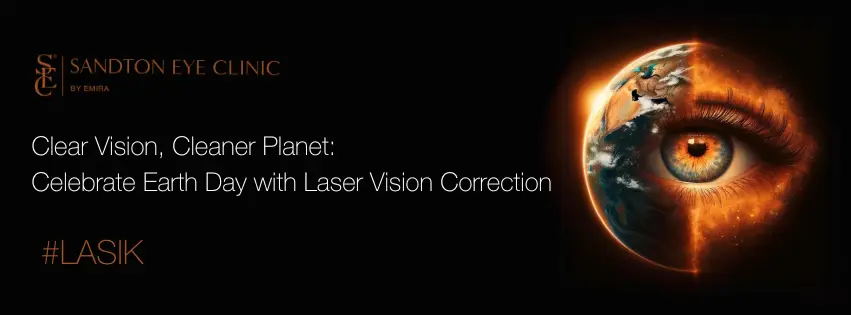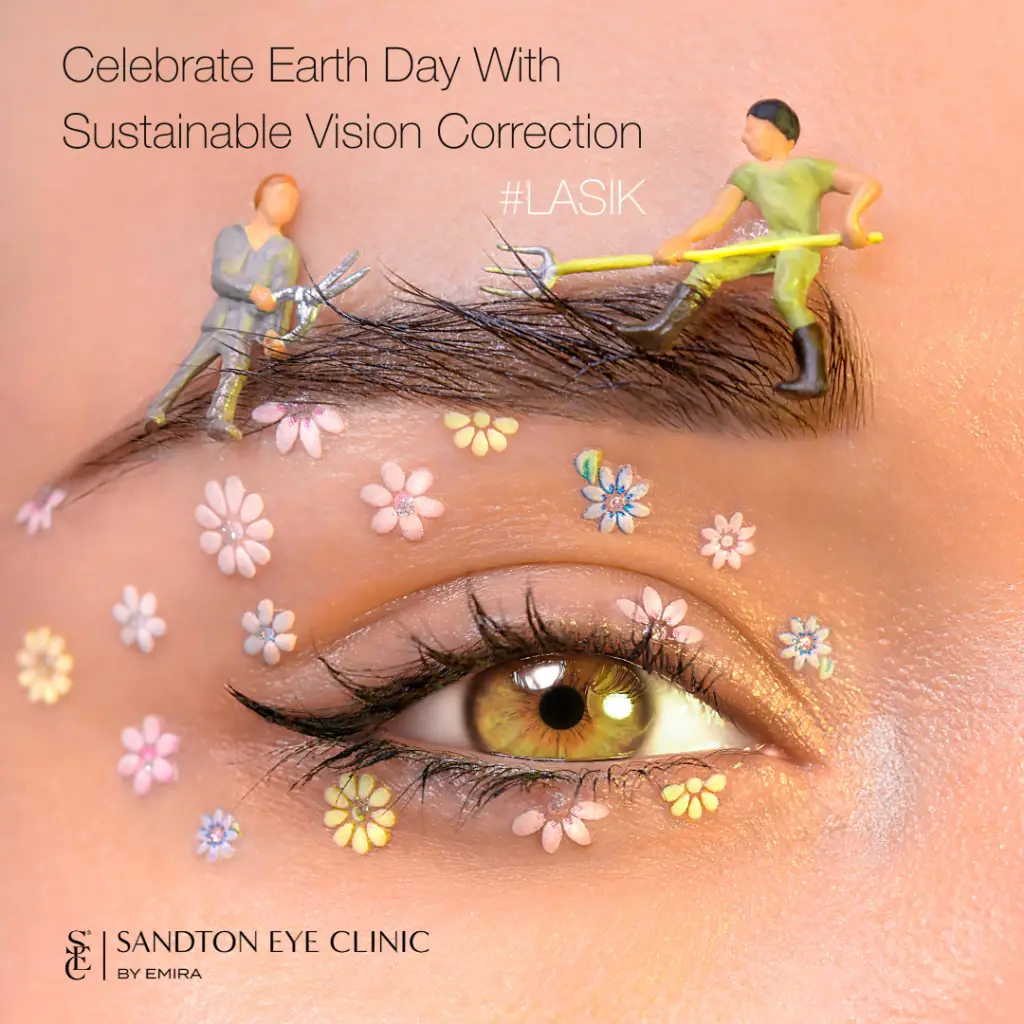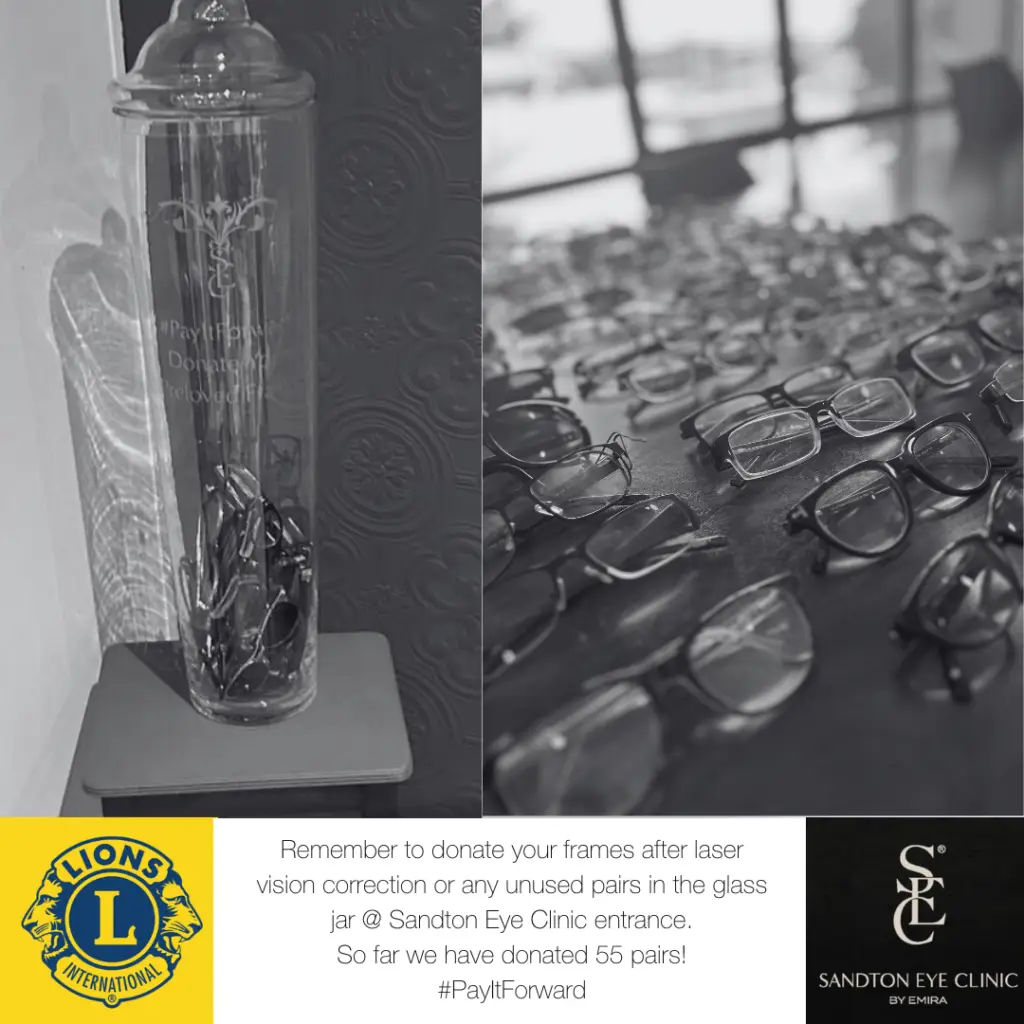
Embracing Sustainability with Every Glance
As we celebrate Earth Day this April 22nd, it’s an opportune moment to reflect on the choices we make and their impacts on our planet. At Sandton Eye Clinic, we’re dedicated, not just to improving your vision, but also to promoting sustainability. In the realm of eye care, traditional methods like glasses and contact lenses have long been the norm, but they come with environmental costs that are often overlooked.
The Environmental Cost of Glasses and Contact Lenses
A. Contact Lenses: Small Size, Significant Impact
While convenient, disposable contact lenses contribute significantly to environmental pollution. A recent study by Wilhelmi (2022) highlighted people often forget about contact lenses when calculating their personal plastic use. This is probably because they’re small, so they don’t seem like they’d add much to someone’s overall plastic waste. Yet, globally approximately 150 million people use contact lenses (Moreddu et al., 2019), and 21% of people admitted to disposing of them down drains or toilets (Rolsky et al., 2020). This practice leads to the lenses breaking down into microplastics, polluting our oceans and threatening marine life.
B. Eyeglasses: Beyond the Frames
Eyeglasses, though used longer than contact lenses, pose their own environmental challenges. Many frames are made from plastics and metals, which often end up in landfills if not properly recycled (Pillay, et al.,2023). In addition to occupying landfill space, these materials take centuries to decompose and release methane, a potent greenhouse gas. Our consumer culture, driven by fashion and prescription changes, encourages frequent updates, leading to more waste.
Laser Vision Correction: A Sustainable Alternative
Laser Vision Correction (LVC) offers a sustainable alternative that reduces long-term waste. By correcting vision permanently through procedures like LASIK, individuals can significantly decrease their dependence on disposable or short-lived vision aids. This choice not only simplifies daily routines but also lessens the environmental burden of continuous manufacturing, packaging, and disposing of glasses and contact lenses.

Acting Locally, Impacting Globally: Sandton Eye Clinic's Initiatives
At Sandton Eye Clinic, our commitment to the environment extends beyond providing sustainable vision correction solutions. We encourage our patients to donate their old glasses to Lionsbright Sight to be reused and recycled. This initiative ensures that glasses are repurposed for those in need, extending their life cycle and reducing environmental impact.

Conclusion: A Vision for the Future
This Earth Day, let’s make a conscious choice for our planet’s health and our own. Opting for Laser Vision Correction not only offers you a lifetime of clear vision, but also contributes to a more sustainable world. Join us in reducing environmental waste and promoting a healthier planet.
Let’s look to the future with clarity and responsibility. For more information on sustainable practices in eyewear, visit Lensology’s environmental commitment. To learn about broader environmental efforts and sustainability initiatives, Tesla’s environmental impact report provides a comprehensive overview.
By supporting sustainable vision care, we contribute to a larger global movement towards environmental consciousness. Even for those who choose not to have laser vision correction, Sandton Eye Clinic remains a drop off point for your pre loved glasses to be donated to Lionsbright sight. Sandton Eye Clinic invites you to be part of this transformative journey towards a more sustainable and visually clear future.
Disclaimer: If you are considering LASIK visit your refractive surgeon for advice. Glasses are safe because there is no medical procedure involved. If you are happy to wear glasses LASIK is not for you. It may however be a good idea to donate your preloved glasses. LASIK is a lifestyle procedure providing unaided vision. According to research the cumulative risk of contact lenses may be more than LASIK. Three-Year Longitudinal Survey Comparing Visual Satisfaction with LASIK and Contact Lenses https://pubmed.ncbi.nlm.nih.gov/27208981/
References
- Maier, P., Betancor, P. K., & Reinhard, T. (2022). Contact Lens-Associated Keratitis-an Often Underestimated Risk. Deutsches Arzteblatt international, 119(40), 669–674. https://doi.org/10.3238/arztebl.m2022.0281
- Moreddu, R., Vigolo D., & Yetisen, A.K. (2019). Contact lens technology: From fundamentals to applications. Healthcare Materials, 8(15).
- Pillay, et al. (2023). Environmental Impact of Eyewear: A Comprehensive Study.
- Rolsky, C., Kelkar, V. P., & Halden, R. U. (2020). Nationwide mass inventory and degradation assessment of plastic contact lenses in US
- Wilhelmi, A., 2022. Environmental Impacts of Contact Lens Waste. Aisthesis: The Interdisciplinary Honors Journal, 13(1).
- https://lensology.co.uk/the-environmental-impact-of-glasses/
- https://www.lionsbrightsight.co.za/
Share this Vision Correction Story Online
Contact Us
Recent Sight Stories

Advancing Vision Correction in South Africa: First Artiplus Lens Procedure Performed by Dr Lourens Coetzee
Precision in sight – Dr Lourens Coetzee holds up an enlarged model of the Artiplus Phakic Implantable Lens, representing a breakthrough in the correction of presbyopia. South Africa has entered

Clear Vision, Her Way: Why More Women Are Choosing LASIK
In honour of Women’s Day, we explore how clear vision empowers women to live confidently, freely, and on their own terms, and why women are considering vision correction like LASIK.

LASIK: A Shift in Perspective on Clear Vision
| Written by Dr Yolandie Coetzee July marks Global Vision Correction Month—a time to reflect on how far we’ve come in restoring sight and improving lives. Whether through glasses, contact

What’s Causing Your Blurry Vision? A Guide to Refractive Errors
If you’ve ever struggled to see clearly—whether at a distance, up close, or both—it may be due to a refractive error. The most common types include nearsightedness (myopia), farsightedness (hyperopia), astigmatism, and presbyopia. These conditions
